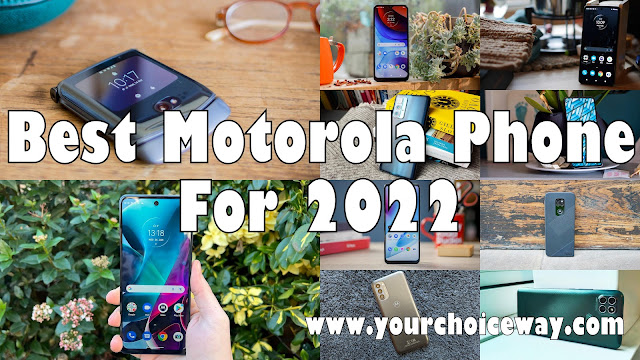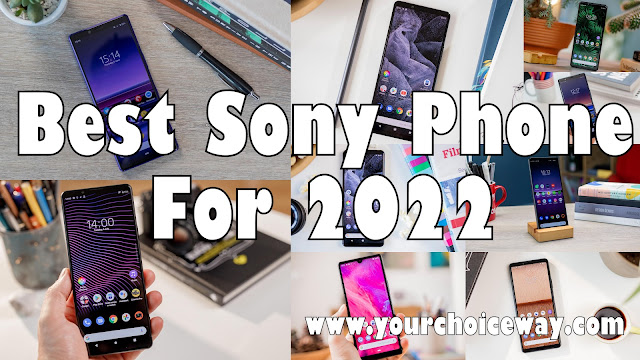More and more phones now offer 5G, so if you're buying a new handset you need to consider making the switch - here are the best 5G phones right now.
2019 was the year the 5G phones started appearing on store shelves, then in 2020 the technology really took off, with the country's major mobile carriers all supporting this new super-fast network infrastructure and a wealth of manufacturers starting to offer top-tier phones with 5G modems onboard.
That means that as we march into 2021, there is already a great selection of 5G-capable phones worth considering, and very little reason not to buy a 5G phone.
Of course, with new tech there always comes a price tag, and for a while 5G was really limited to high-end and flagship devices. That's no longer the case, with more and more mid-range and even budget handsets now supporting faster networking. In this article we're focusing on mid-range and flagship phones, but be sure to check out our guide to cheap 5G phones if your budget is a bit lower but you still want to future-proof your next phone.
1. iPhone 12
It took Apple a little while longer to roll out 5G technology, but it was well worth the wait. Sporting an Apple-designed 5G modem and support for 5G bands around the world, the iPhone 12 is the best iPhone for those that want super-fast connectivity and all the benefits that come along with it.
It's not just 5G that makes the iPhone 12 great though; it features an industrial design reminiscent of the iPhone 5 and it features Apple's latest and greatest A14 Bionic chipset at its heart, offering incredible performance across the board. There are also improvements to the camera setup and, importantly, it sports the same 6.1in Super Retina XDR display as the iPhone 12 Pro - a first for a non-pro iPhone.
If the standard iPhone 12 is too big for your tastes, we'd also recommend the 5G-enabled iPhone 12 Mini, which offers the same features in a smaller form factor.
Read our full Apple iPhone 12 review
2. Samsung Galaxy S21
Samsung takes the same balancing act that it struck with last year's Galaxy S20 and updates the hardware.
As a result, you get strong performance, a fresh new design, better battery life, the latest Android 11 (dressed in Samsung's own One UI 3.1, at launch) and integrated 5G.
Best of all, all this comes in a more affordable package than its predecessor - though if you're happy to spend a little more, there's always the larger S21 Plus.
Read our full Samsung Galaxy S21 review
3. Xiaomi Mi 11
The Xiaomi Mi 11 is a rock-solid performer thanks to the Qualcomm Snapdragon 888 chipset with integrated 5G at its heart, which comes paired with 8GB RAM and plenty of storage.
Throw in a WQHD+ 120Hz AMOLED display (quad-curved, no less), 108Mp rear camera, and 55W fast-charging paired with 50W wireless charging, and you can see that the Mi 11 won't be beaten for specs at its price.
There are minor downsides - you won't get an IP rating, there's no telephoto camera, and Xiaomi's MIUI software still has room for improvement. But if pure performance is what you're looking for, then look no further.
It's not on sale in the UK just yet, but will launch here in March, so start saving.
Read our full Xiaomi Mi 11 review
4. OnePlus Nord
OnePlus' second-ever affordable phone is an absolute treasure, powered by Qualcomm's solid mid-range 5G-capable chip, the Snapdragon 765G.
The Nord also totes a 90Hz AMOLED display, a great primary 48Mp camera and solid 30W fast charging.
Software-wise, the company's OxygenOS user experience is also a major highlight - bringing responsive interactivity and a clean interface to the table that lends itself to the phone's powerful, premium feel.
Read our full OnePlus Nord review
5. OnePlus 8 Pro
The OnePlus 8 Pro is arguably the company's first full flagship, finally incorporating long-requested features like wireless charging and an IP68 waterproof rating to make it a genuine contender with the likes of Samsung's finest of 2020.
Understandably, the price has gone up accordingly, but even the base model - no slouch at 8GB RAM and 128GB storage - still represents serious value by flagship standards, meaning you will save at least some money by opting for OnePlus over most other manufacturers.
The 8 Pro's camera is the company's best yet and while it still lags behind rivals, OnePlus's imaging engineers have clearly worked hard to narrow the gap considerably. Throw in 5G, a great design and the best Android skin around and the OnePlus 8 Pro is easy to recommend to anyone who can afford it.
Just bear in mind that the OnePlus 9 Pro is right around the corner, so you might be better off waiting if you can bear to.
Read our full OnePlus 8 Pro review
6. Google Pixel 5
Google's first 5G flagship walks a different path to its predecessors, showcasing Android 11 to the best of its abilities but also shedding the more experimental features of previous generations and opting for more conservative hardware at the same time.
Its clean design and user experience are supported by a set of superb - and now more feature-rich - cameras, as well as an incredibly compact design and battery life that's actually usable.
Read our full Google Pixel 5 review
7. OnePlus 8T
Bigger numbers in all things except price renders the OnePlus 8T a great buy. It's cheaper than the OnePlus 8's original RRP and yet sports a smoother 120Hz refresh rate display and is the first of the company's phone's to integrate blisteringly-fast 65W fast charging.
It's also one of the first phones outside of Google's own Pixel 5 to boast the latest and greatest Android 11; in this instance, covered by OnePlus' OxygenOS 11 user experience on top.
Read our full OnePlus 8T review
8. Oppo Find X2 Pro
The Oppo Find X2 Pro is a phenomenal phone by any measure. The 6.7in 10-bit 120Hz QHD+ panel is one of the best displays in any phone right now and Oppo backs it up with the fastest wired charging around at 65W and a top-tier camera that boasts two 48Mp lenses and up to a 10x hybrid zoom.
You’ll have to live without wireless charging and the choice between bland grey ceramic or garish green or orange vegan leather finishes might leave some struggling to find a design that suits their style.
For pure performance though, the Find X2 Pro is still a force to be reckoned with: with all of the above plus a Snapdragon 865 chip, 512GB storage and 12GB RAM - you just have to be willing to pay the price, as it doesn't come cheap.
The Find X3 series is nearly here though, so now may not be the best time to drop your hard-earned cash on the X2 Pro.
Read our full Oppo Find X2 Pro review
9. Samsung Galaxy Note 20 Ultra
A true powerhouse - the Note 20 Ultra doesn't take any prisoners, with its flagship performance, greatly-improved camera (compared to the Galaxy S20 Ultra), low-latency S Pen experience and the sheer number of features it offers.
Samsung's One UI user experience is jam-packed with functionality without feeling overwhelming. You have control over pretty much every aspect of the phone and it's designed to help you get things done.
The pairing of S Pen and the updated Samsung Notes experience is a particular highlight, as is the tighter Microsoft integration. There's also the matter of DeX desktop experience - which is now fully-wireless with compatible displays.
Read our full Samsung Galaxy Note 20 Ultra review
10. iPhone 12 Pro Max
The iPhone 12 Pro Max may not utilise its expansive display as effectively as the Note 20 Ultra does - especially when it comes to matters of productivity - but it's an undeniably superb large-screened phone all the same.
It boasts some of the best performance on the market, a stunning 6.7in OLED display, great battery life, support for MagSafe for iPhone accessories and totes one of the most capable smartphone cameras money can buy - complete with sensor-shift OIS (optical image stabilisation), something we've never before seen on a smartphone.
Provided you're comfortable with its sizeable proportions, you'll just have to grapple with its equally demanding high price tag.
I's worth pointing out that the smaller and cheaper iPhone 12 Pro also offers 5G, but we think it's the least compelling of the iPhone 12 line-up, as it's too similar to the standard 12.
Read our full iPhone 12 Pro Max review
5G Phone Buying Advice
Getting a 5G phone is only one piece of the puzzle. To actually take advantage of this latest generation of cellular connectivity you need to:
- Have a 5G-capable phone
- Subscribe to a network that actively offers 5G connectivity
- Subscribe to a contract that actively includes 5G connectivity
- Be in an area with good 5G coverage
EE and Vodafone were the first networks to get their 5G networks up and running, with O2 joining the fray in October 2019. Three's 5G network was technically up and running in 2019 too but the carrier didn't start offering 5G phone plans until 2020.
There's also the matter of the nation's MVNOs (mobile virtual network operators) - carriers that effectively piggyback off of other networks' existing 5G infrastructure. Right now BT Mobile (using EE's 5G network), Sky Mobile (using O2's 5G network), Tesco Mobile (using O2's 5G network), Giffgaff (also using O2), and Voxi (using Vodafone's 5G network) all also offer 5G plans/phones.
Before you splash out on a 5G phone, it's worth checking to see what the quality of 5G coverage in your area is like. Not all 5G phones are available from all carriers and you may have to change network if you want to reap the benefits of 5G in your area.
Check out RootMetrics' coverage map for an independent evaluation of mobile coverage (including 5G coverage) from the UK's major carriers, across the nation.
Why Upgrade To 5G?
5G is around 20 times faster than 4G, with the potential for even better speeds in future. With 5G, you'll be able to stream video in 4K resolution without buffering and make high-resolution video calls if you so wish. There are also benefits for mobile gaming, because of 5G's lower latency. For more details on the technology, check out our 'What is 5G?' guide.

























0 comments:
Post a Comment